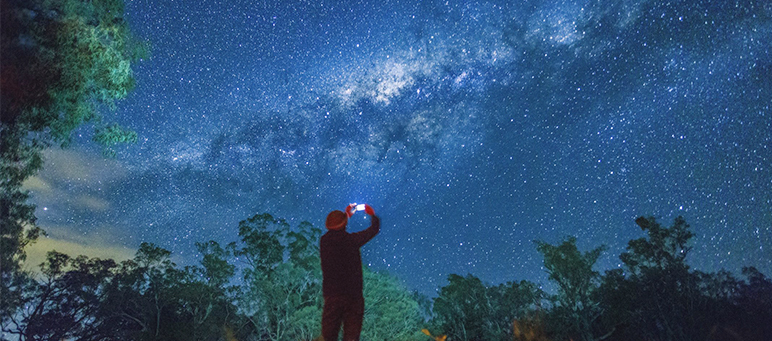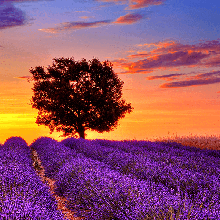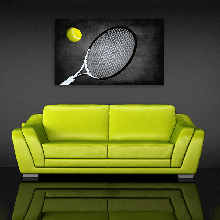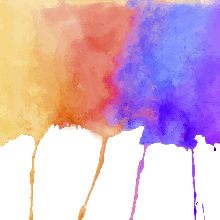Astrophotography is a fascinating and rewarding hobby that allows you to capture the beauty of the night sky in stunning detail. With the advent of digital cameras and smartphones, astrophotography has become more accessible than ever before. If you're new to shooting starry landscapes, you might be wondering where to start. The good news is that you can get started with astrophotography using just your phone! By following these tips and experimenting with different techniques, you can start creating stunning photos of the night sky with just your smartphone. Who knows? Maybe you’ll find that astrophotography with a smartphone is your new favorite hobby!
Invest in a Smartphone Tripod and Bluetooth Remote (and maybe a tracking mount)
One of the most important pieces of equipment you'll need for astrophotography is a tripod mount for your smartphone. This will help stabilize your phone, which is crucial for long-exposure shots. A tripod mount will also help you capture star trails and deep-sky objects. Another important accessory to consider investing in is a Bluetooth remote for your smartphone. A Bluetooth remote allows you to trigger the camera without physically touching the phone, which can cause the phone to move and result in blurry photos. This is especially important for long exposure shots, where even the slightest movement can ruin your photo. By using a smartphone tripod mount and a Bluetooth remote, you can capture stable and sharp photos of the night sky with your phone. If you're looking to invest more in your gear, a tracking mount is an excellent option to consider. Tracking mounts are designed to compensate for the movement of the stars and the rotation of the earth, ensuring that your camera remains pointed at the same spot in the sky for an extended period of time. This is particularly useful for capturing deep-sky objects or creating time-lapse videos of the night sky. With a tracking mount, you can capture sharp and detailed images of the cosmos without any blurring or trailing. While tracking mounts can be more expensive than other accessories, they can significantly enhance the quality of your astrophotography and take your skills to the next level.

Learn about Long Exposure and Image Stacking
Long exposure and image stacking are two key techniques used in astrophotography to capture stunning photos of the night sky. Long exposure refers to the practice of keeping the camera's shutter open for a longer period of time than usual, allowing more light to enter the camera sensor. This is crucial for astrophotography because the night sky is much darker than the daytime sky, and the camera needs more time to capture enough light to create a properly exposed image. Image stacking is used in astrophotography to create high-quality images of the night sky. It involves taking multiple photos of the same subject and combining them into a single, high-quality image. This technique is particularly useful for capturing deep-sky objects, such as galaxies or nebulae, which are often too faint to be seen with the naked eye. To create an image stack, you'll need to take several photos of the same subject, ideally using a tripod mount to keep your phone steady and minimize any unwanted camera movement. Then, you can use specialized software, such as DeepSkyStacker or Starry Landscape Stacker, to align the photos and average out the pixels, resulting in a final image with reduced noise and increased detail.
Try Out Night Mode or Download a Camera App
When it comes to night photography, having the ability to manually adjust your camera's settings is crucial for capturing stunning images of the night sky. Luckily, some smartphones have this functionality built-in, allowing you to adjust settings such as ISO and shutter speed to capture more light and achieve the desired effect. In addition, some smartphones even have a "night mode" feature that automatically adjusts settings to be more sensitive to light, allowing for longer exposure times and brighter photos. However, if your smartphone doesn't have these features, don't worry - there are plenty of camera apps available that offer manual control over these settings. One such app is Camera FV-5, which provides complete control over your camera's settings, including ISO, shutter speed, and aperture. With the ability to adjust these settings manually, you can take full control over your night photography and capture stunning images of the stars and the night sky.
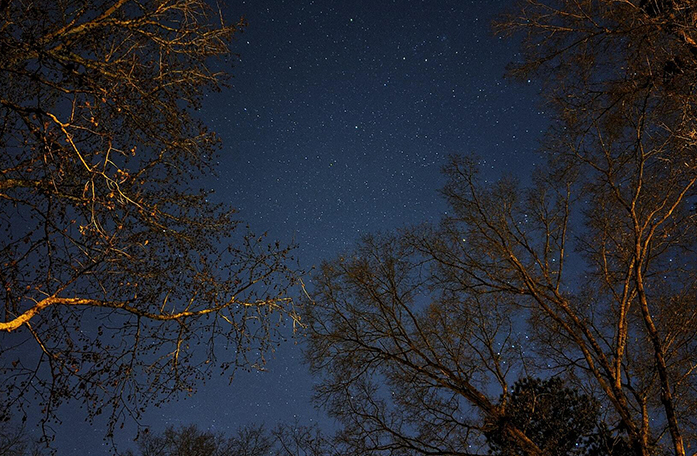
Avoid Light Pollution as Much as You Can
Light pollution is one of the biggest challenges that astrophotographers face. Artificial lights from street lamps, buildings, and other sources can cause the night sky to become washed out and make it difficult to capture the stars and other celestial objects in your photos. To combat this issue, it's important to try and shoot in areas with low light pollution. This can include remote locations, national parks, or other areas with minimal artificial light. If you're unable to travel to a low-light area, you can also invest in a light pollution filter, which can help filter out artificial light and enhance the natural light in your photos. Light pollution filters are available for both DSLR cameras and smartphones, and can help reduce the effects of light pollution in your astrophotography. By taking steps to avoid or minimize light pollution, you can capture clearer and more stunning photos of the night sky.
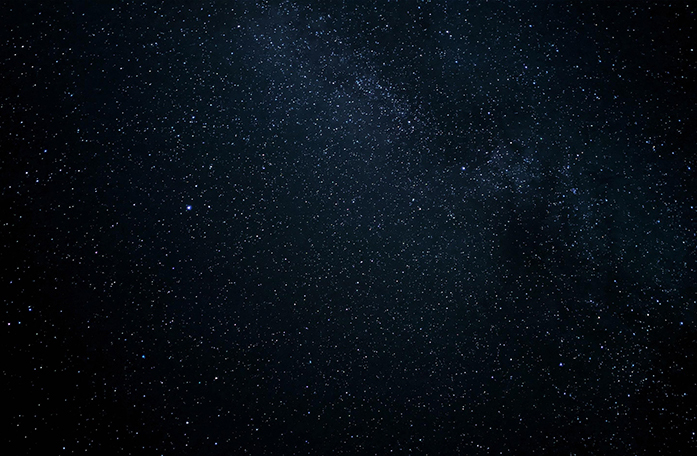
Get to Know the Night Sky
Before heading out to capture photos of the night sky, it's important to familiarize yourself with the patterns and movements of the celestial objects you're interested in. Understanding the phases of the moon and the seasons of the Milky Way can help you plan the best times and locations to take photos. By knowing the positions of the stars and constellations in the sky, you can also compose your images and add foreground elements to create more interest in your photos. Star and planet tracker apps, such as SkySafari and Star Chart, are valuable tools that can help you identify and track celestial objects in the night sky. Additionally, astronomy websites and blogs can provide helpful tips and techniques for capturing specific objects or achieving certain effects in your photos. By taking the time to learn about the night sky, you'll be better equipped to capture stunning photos of the stars and the cosmos.
Consider Using a Telescope
For those who are serious about smartphone astrophotography, using a telescope can take your photos to the next level. A telescope with a smartphone mount allows you to capture detailed images of the night sky, including deep-sky objects and galaxies that are beyond the reach of a regular camera lens. With a telescope and a smartphone mount, you can easily align your phone with the telescope and capture sharp and detailed images of the cosmos. However, it's important to note that using a telescope requires some additional skills and knowledge. One important aspect to consider is polar alignment. Polar alignment is the process of aligning the telescope with the north celestial pole to ensure that the stars are tracked accurately as they move across the sky. This is important for capturing sharp and detailed images, particularly when using manual exposure mode. Ultimately, using a telescope for smartphone astrophotography can be an exciting and rewarding experience, allowing you to capture images that are beyond the reach of a regular camera lens.

Get Your Focus Right in Prep for Post-Processing Your Photos
Post-processing your photos is an essential part of astrophotography, but it's not the only one. Another important aspect of capturing stunning night sky images is ensuring that your focus is spot-on. Focusing with live view is a popular technique used in astrophotography that allows you to focus your camera lens more accurately. It involves using the live view feature on your camera to zoom in on a bright star and adjusting the focus until the star appears as sharp as possible. This technique is particularly useful when using a wide-angle lens and can help ensure that your entire photo is in focus. Once you've captured your photos, post-processing software such as Adobe Lightroom or Photoshop can help you adjust the exposure, contrast, and colors to bring out the full beauty of your night sky images. Additionally, you can use image stacking software to combine multiple photos into a single, high-quality image. This technique is particularly useful for capturing deep-sky objects, which require a longer exposure time and can benefit from reduced noise and increased sharpness. By combining focusing with live view and post-processing techniques, you can capture stunning astrophotography images that are sure to leave viewers in awe.
Remember, There's No Beating a Real, High-Quality Camera
While using your smartphone for astrophotography may not result in images that can compete with those captured by specialized cameras, it is a fantastic way to start exploring this fascinating hobby. The equipment needed for smartphone astrophotography is much less expensive than that required for traditional astrophotography, and it is an accessible and convenient way to start capturing the beauty of the night sky. Additionally, using your smartphone can help you develop essential astrophotography skills such as understanding the movements of the stars, finding low light pollution areas, and experimenting with different nightscape photography techniques, such as long-exposure and image stacking. If you find that you enjoy smartphone astrophotography, you can then move on to purchasing more expensive cameras and materials to further your hobby and capture even more stunning images of the cosmos.

Smartphone/iPhone night photography is a fun and accessible way to explore the world of astrophotography. By investing in a tripod and Bluetooth remote, trying out night mode or downloading a camera app, avoiding light pollution, getting to know the night sky, and considering a telescope with a smartphone mount, you can start taking stunning photos of the stars and the night sky. With these tips in mind, you'll be well on your way to capturing the beauty of the cosmos and creating images that inspire wonder and awe.

When you're ready to put your incredible astrophotography photos on the wall, glossy tile prints are the perfect way to showcase the glistening night sky! Custom canvas prints are also a unique way to print your images and add character to your home or office.
So grab your smartphone, start planning a trip, and happy shooting!
| GET STARTED |

